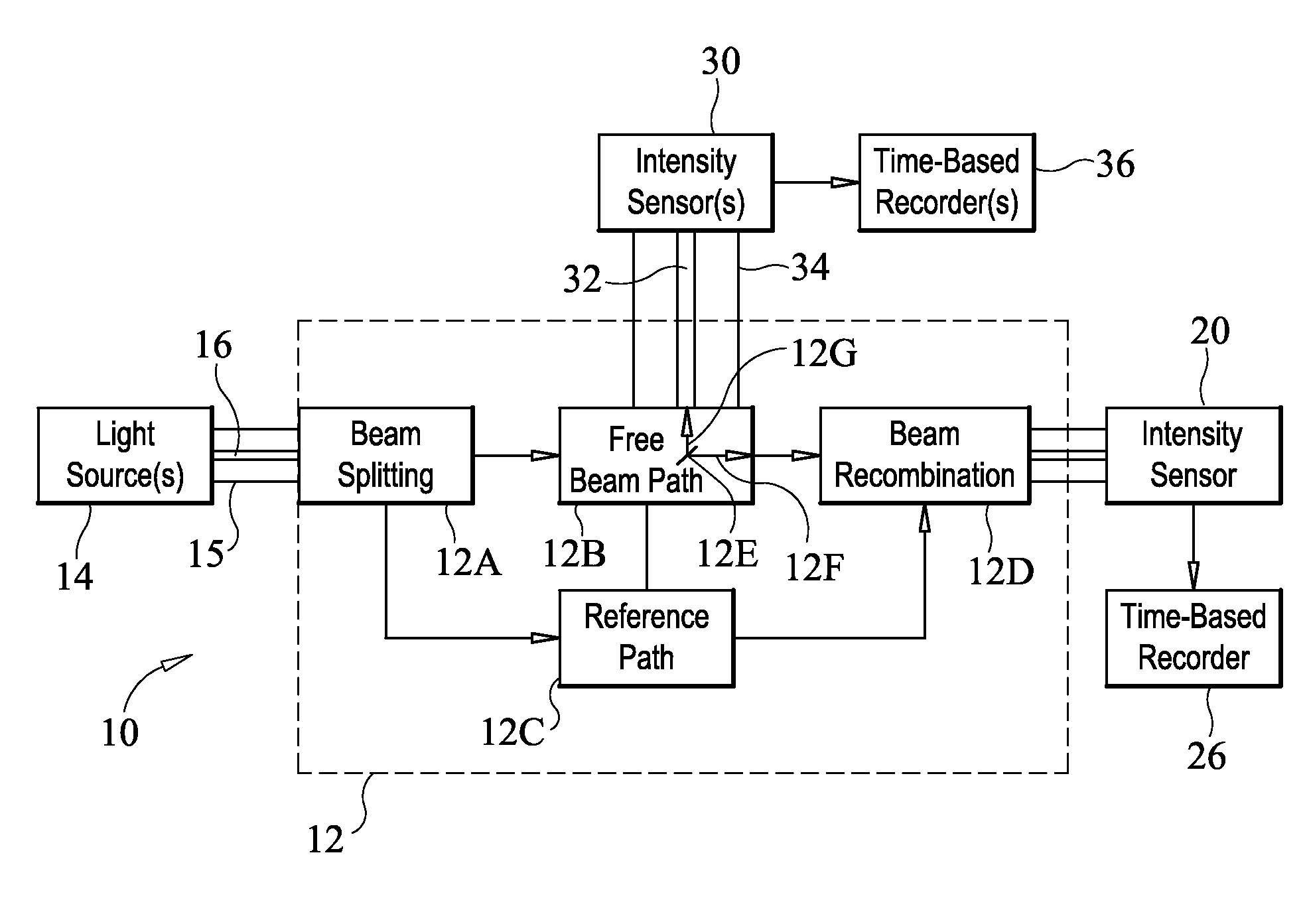Optical multi-species gas monitoring sensor and system
a multi-species, gas monitoring technology, applied in the direction of instruments, gas/flame sensing radiation, interferometric spectrometry, etc., can solve the problems of low detection accuracy, low detection efficiency, and low accuracy of gas monitoring sensors and systems
- Summary
- Abstract
- Description
- Claims
- Application Information
AI Technical Summary
Benefits of technology
Problems solved by technology
Method used
Image
Examples
Embodiment Construction
)
[0015]Referring now to the drawings and more particularly to FIG. 1, a block diagram of a gas monitoring sensor and system in accordance with an embodiment of the present invention is shown and is referenced generally by numeral 10. By way of illustrative example, the present invention will be described for its use in monitoring the leakage of multiple species of gas into a non-gaseous vacuum environment. Monitoring will generally take place outside of a positive-pressure container that stores a gas (or liquid). For example, the container could be cryogenic liquid storage tank parked in a spatial orbit or deployed on a lunar or other planetary surface. In either of these situations, it is assumed that the environment surrounding the storage tank is a non-gaseous space environment.
[0016]At the heart of system 10 is a multi-species gas sensor 12 positioned where gas monitoring is of interest. Sensor 12 incorporates an optical interferometer that can be constructed in accordance with ...
PUM
 Login to View More
Login to View More Abstract
Description
Claims
Application Information
 Login to View More
Login to View More - R&D
- Intellectual Property
- Life Sciences
- Materials
- Tech Scout
- Unparalleled Data Quality
- Higher Quality Content
- 60% Fewer Hallucinations
Browse by: Latest US Patents, China's latest patents, Technical Efficacy Thesaurus, Application Domain, Technology Topic, Popular Technical Reports.
© 2025 PatSnap. All rights reserved.Legal|Privacy policy|Modern Slavery Act Transparency Statement|Sitemap|About US| Contact US: help@patsnap.com


